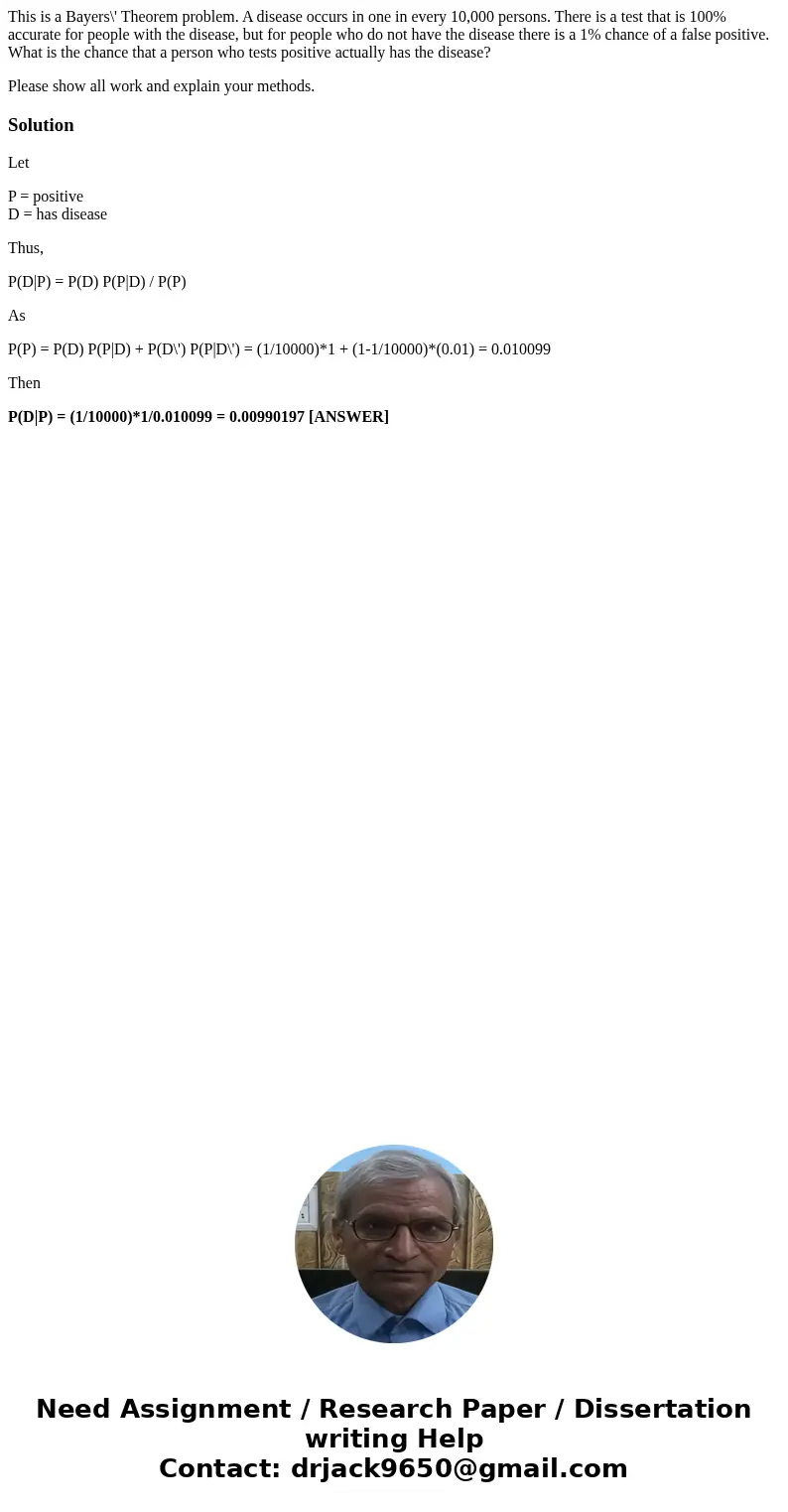This is a Bayers Theorem problem A disease occurs in one in
This is a Bayers\' Theorem problem. A disease occurs in one in every 10,000 persons. There is a test that is 100% accurate for people with the disease, but for people who do not have the disease there is a 1% chance of a false positive. What is the chance that a person who tests positive actually has the disease?
Please show all work and explain your methods.
Solution
Let
P = positive
D = has disease
Thus,
P(D|P) = P(D) P(P|D) / P(P)
As
P(P) = P(D) P(P|D) + P(D\') P(P|D\') = (1/10000)*1 + (1-1/10000)*(0.01) = 0.010099
Then
P(D|P) = (1/10000)*1/0.010099 = 0.00990197 [ANSWER]

 Homework Sourse
Homework Sourse